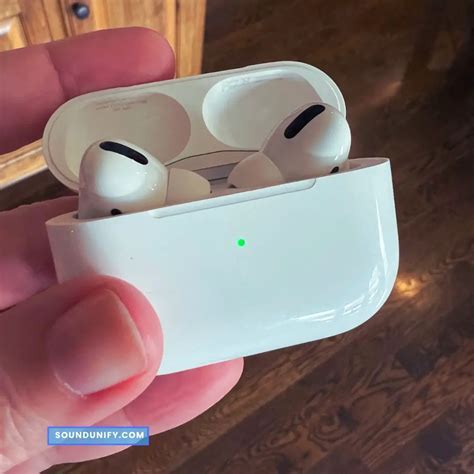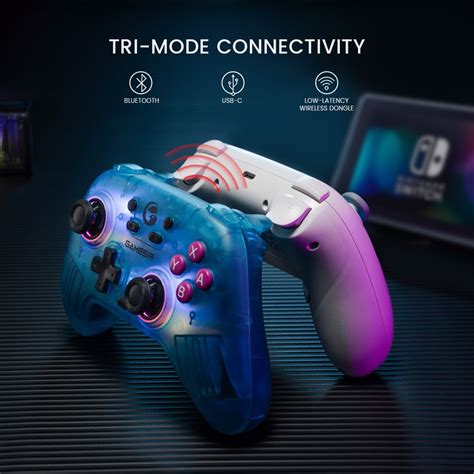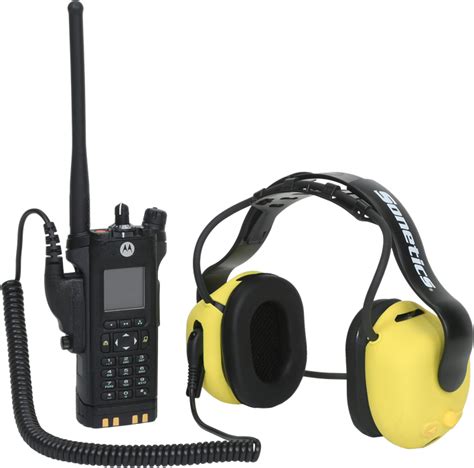The era of wireless technology has revolutionized the way we communicate and listen to music. With the rise of wireless earbuds, people can enjoy their favorite tunes or engage in conversations without the constraint of tangled wires. However, the convenient wireless experience often comes at the expense of sound clarity and conversation quality.
When it comes to wireless earbuds, achieving crystal-clear audio transmission poses significant challenges. The absence of cables introduces a myriad of technical complexities that can impact the overall sound experience. The pursuit of seamless wireless connectivity, combined with compact device designs, creates obstacles that manufacturers face in ensuring exceptional conversation quality.
Engineers must tirelessly work towards addressing the issues that commonly plague wireless earbuds, such as distorted sound, reduced signal strength, and compromised voice clarity. These challenges stem from various factors like interference from other electronic devices, limited bandwidth for transmission, and the need to compress audio data to fit wireless transmission protocols.
Overcoming these hurdles requires a delicate balance between technological advancements and user expectations. Innovations in signal processing, improved microphone designs, and refined audio codecs are being continuously developed to elevate the conversation quality. Manufacturers are investing considerable efforts into creating cutting-edge solutions that can replicate the fidelity and clarity of traditional wired headphones.
Only by exploring the symbiotic relationship between wireless capabilities and superior sound transmission, can we hope to revolutionize the conversation quality in wireless earbuds.
Factors contributing to unsatisfactory audio during wireless headphone conversations

When it comes to wireless headphones, users often find that the expected quality of conversations is not met. This can be attributed to a variety of factors, which affect the overall audio experience. In this section, we will explore the different elements that contribute to subpar conversation quality when using wireless headphones.
| Connectivity: | One of the key hurdles affecting conversation quality in wireless headphones is connectivity issues. Instability in wireless connections can lead to audio interruptions, delays, or dropouts, ultimately hindering clear and seamless communication. |
| Compression: | In order to transmit audio wirelessly, data compression techniques are employed. However, the level of compression used can impact the conversation quality. High compression ratios can result in loss of audio details and reduced clarity, making it harder to understand speech during conversations. |
| Background noise: | Wireless headphones may struggle to effectively suppress background noise during conversations. Ambient sounds such as traffic, crowds, or office noises can interfere with the audio signal, making it challenging for users to perceive and comprehend speech clearly. |
| Microphone quality: | The quality of the microphone built into wireless headphones can significantly impact the conversation quality. Poor microphone design or positioning may result in muffled or distorted speech capture, leading to difficulties in communication. |
| Codec limitations: | Wireless headphones utilize codecs for audio transmission between devices. Certain codecs may have limitations that affect voice transmission, resulting in reduced conversation quality. Codecs with lower bitrates or limited frequency ranges can negatively impact the clarity and richness of spoken words. |
In summary, various factors can contribute to the unsatisfactory conversation quality experienced with wireless headphones. Connectivity issues, audio compression, background noise, microphone quality, and codec limitations all play a role in determining the clarity and overall audio experience during conversations. By understanding these factors, manufacturers can work towards improving wireless headphone technology to meet the expectations of users.
The Influence of Bluetooth Technology on Communication Sound Experience
When it comes to the auditory aspect of wireless audio devices, the presence of Bluetooth technology can significantly influence the overall communication sound experience. The utilization of wireless headphones with Bluetooth connectivity has become increasingly common in the modern era. However, despite the convenience offered by this technology, there are certain factors that can impact the quality of conversations conducted through wireless headphones.
One key factor is the reliance on Bluetooth for the transmission of audio signals. Bluetooth technology, while providing wireless communication capabilities, introduces potential limitations that could affect conversation clarity. As Bluetooth operates within the radio frequency range, it is susceptible to interference from various external sources, such as other wireless devices, electronic equipment, or physical barriers, which can lead to signal disruptions and quality degradation.
In addition to interference, the bandwidth limitations of Bluetooth can also impact conversation quality. Due to the constraints in data transmission capacity, the audio data sent through Bluetooth may undergo compression or undergo a reduction in quality, leading to potential distortions or reduced clarity. This limitation becomes particularly relevant when considering conversations with multiple participants or during activities that require high fidelity audio transmission, such as virtual conferences or professional calls.
Furthermore, the efficiency and compatibility of the Bluetooth codec utilized by different wireless headphones can play a significant role in the conversation quality. Different headphones may support different Bluetooth codecs, each with varying levels of audio quality and latency. The selection of the appropriate codec can affect the sound reproduction fidelity, as well as the synchronization of audio and visual elements during conversations conducted via wireless headphones.
Therefore, it is important to acknowledge that the drawbacks associated with Bluetooth technology can contribute to the potential decline in conversation quality when using wireless headphones. As consumers continue to embrace wireless audio devices, advancements in Bluetooth technology and the implementation of alternative wireless communication protocols may serve to address and mitigate these challenges, ultimately improving the overall experience of conversations through wireless headphones.
The Impact of Background Noise on Wireless Headphone Conversations

Background noise can significantly influence the overall quality of conversations when using wireless headphones. The presence of noise in the environment where the headphones are used affects the clarity, intelligibility, and overall understanding of the conversation. This section explores how different types of background noise can negatively impact the conversation experience with wireless headphones.
1. Distractions from surrounding noises:
- Interruptions caused by ambient noises, such as traffic, construction, or household sounds, can divert attention and impede effective communication.
- Noises with similar frequencies to speech can mask important information, making it difficult to understand and respond to the conversation.
- The continuous presence of background noise can create a constant distraction, resulting in reduced concentration and engagement in the conversation.
2. Interference from electronic devices:
- Electromagnetic interference from other electronic devices, such as smartphones, appliances, or Wi-Fi routers, can introduce unwanted static, crackling sounds, or signal drops during wireless headphone conversations.
- The interference can disrupt the audio signal, making it challenging to maintain a clear and fluid conversation.
- Signal interference is more prominent in environments with a high concentration of electronic devices or areas with poor signal reception.
3. Inadequate noise cancellation technology:
- Some wireless headphones feature noise cancellation technology that intends to minimize background noise and improve conversation quality.
- Nevertheless, headphones with subpar noise cancellation capabilities may fail to effectively reduce ambient noise, leading to a compromised conversation experience.
- Insufficient noise isolation can result in distorted audio, reduced speech intelligibility, and an overall poor quality conversation.
Understanding how different types of background noise can impact conversation quality is crucial in the development of wireless headphones with improved noise cancellation and audio performance. Addressing these challenges can ultimately enhance the overall communication experience for users of wireless headphones.
The Significance of Mic Positioning in Influencing Conversation Experience
The way the microphone is positioned plays a critical role in determining the overall experience of conversations while using wireless headphones. The placement of the microphone is crucial as it directly impacts the clarity, accuracy, and intelligibility of the captured sound during communication, thus significantly affecting the quality of the conversation.
Proper microphone positioning ensures that the user's voice is accurately picked up and transmitted, minimizing background noise, distortions, and interference. This, in turn, guarantees a clear and smooth flow of communication between the headphones and the connected device. Conversely, improper mic placement can result in compromised sound transmission and hinder effective conversation experiences.
The positioning of the microphone on wireless headphones can vary, with some models having it integrated into the earcup or situated on a protruding boom arm extending closer to the user's mouth. The location and design of the microphone directly impact its ability to capture sound efficiently and effectively.
| Advantages of Optimal Mic Positioning | Disadvantages of Suboptimal Mic Positioning |
|---|---|
| Enhanced voice clarity and intelligibility. | Decreased voice clarity and intelligibility. |
| Reduced background noise interference. | Inaccurate sound capture resulting in increased background noise and interference. |
| Minimized distortion and audio artifacts. | Elevated levels of distortion and audio artifacts. |
Headphone manufacturers strive to optimize the placement of the microphone to achieve the best possible conversation quality. They conduct extensive research and leverage advanced technologies to fine-tune microphone position, aligning it with the user's mouth for optimal sound capture and transmission.
The awareness of how microphone positioning influences conversation experience empowers users to make informed decisions when selecting wireless headphones. By choosing models with well-designed and strategically positioned microphones, individuals can greatly improve the overall quality of their communication and enjoy enhanced conversation experiences.
Can Limited Battery Life Contribute to the Sound Communication Issue in Wireless Headsets?

One possible factor affecting the efficiency of sound communication in wireless headsets could be the limited battery life. The duration for which the headphones can operate without requiring a recharge might play a role in the overall audio quality during conversations.
When the battery life of wireless headphones is inadequate, it can result in various consequences that could negatively impact the conversation experience. One potential implication is the degradation of audio quality, leading to a diminished ability to convey and comprehend spoken messages clearly. This deterioration can manifest in several ways, such as reduced volume, distorted sound, or intermittent connectivity.
In scenarios where the battery life is insufficient, the headphones may struggle to maintain a stable connection with the audio source, causing audio dropouts and interruptions. This instability can disrupt the flow of a conversation, as it becomes challenging to maintain a continuous and seamless exchange of words.
Furthermore, the limited battery life can result in sudden shutdowns or abrupt disconnections, which can altogether halt the communication temporarily. Such interruptions not only disrupt the ongoing conversation but can also impede any potential momentum or engagement between the participants.
Therefore, it is essential to consider the battery life of wireless headphones as a potential contributing factor to the conversation quality issue. By ensuring a longer-lasting battery, headphones can deliver a more consistent and uninterrupted audio experience, thereby enhancing the overall quality of conversations.
Bluetooth Wireless Headphone Setup for Any TV, No Dropouts - No Lip-Sync Delay
Bluetooth Wireless Headphone Setup for Any TV, No Dropouts - No Lip-Sync Delay by Roger Gadget Guy 18,572 views 1 year ago 10 minutes, 35 seconds
Could Using Wireless Earbuds Be Putting You At Risk For Cancer?
Could Using Wireless Earbuds Be Putting You At Risk For Cancer? by CBS Pittsburgh 156,698 views 5 years ago 1 minute, 58 seconds
FAQ
Why is the conversation quality poor in wireless headphones?
The conversation quality in wireless headphones can be poor due to various reasons. One possible reason is the possibility of signal interference. Wireless headphones use radio or Bluetooth signals to transmit audio, and these signals can be affected by other electronic devices nearby, physical obstacles, or even distance from the audio source. This interference can result in a degraded conversation quality with issues like static, dropouts, or distortion.
Are all wireless headphones known for having poor conversation quality?
No, not all wireless headphones have poor conversation quality. The quality of conversation depends on various factors, including the brand and model of the wireless headphones. Some higher-end wireless headphones are designed with advanced technology to minimize signal interference and provide a clear conversation experience. It is always recommended to research and read reviews before purchasing wireless headphones to ensure they meet your specific requirements.
Can the conversation quality be improved in wireless headphones?
Yes, there are several ways to improve the conversation quality in wireless headphones. Firstly, choosing wireless headphones from reputable brands known for their audio quality can make a noticeable difference. Additionally, considering headphones with noise-cancellation or noise-isolation features can help reduce background noise and enhance the clarity of conversations. Lastly, avoiding signal interference by keeping the audio source and headphones in close proximity and minimizing obstructions can also improve the conversation quality.
Is there a difference in conversation quality between wireless headphones and wired headphones?
Yes, there can be a difference in conversation quality between wireless headphones and wired headphones. Generally, wired headphones have a more stable and reliable audio connection since they directly transmit audio signals through the wired connection. On the other hand, wireless headphones rely on wireless signals, which can be susceptible to interference. However, with advancements in technology, some wireless headphones can provide comparable conversation quality to wired headphones, especially those with advanced signal processing capabilities and noise-cancellation features.




